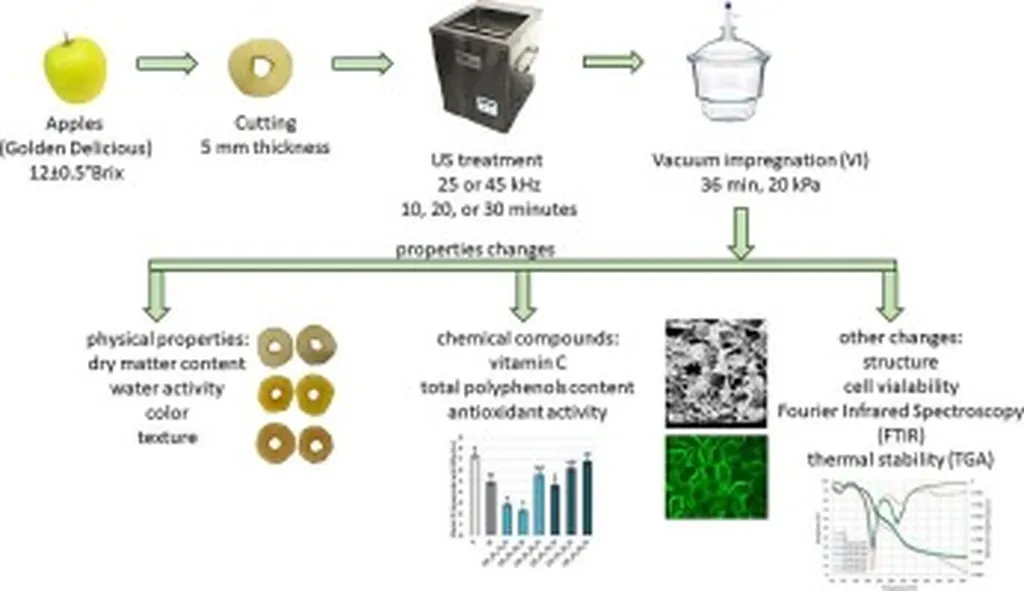In the quest to create healthier, functional snacks, researchers have turned to innovative food processing techniques to enhance the nutritional profile of everyday fruits. A recent study published in the *Polish Journal of Food and Nutrition Sciences* (translated as *Polish Journal of Food and Nutrition Sciences*), led by Marcellus Arnold from the Department of Gastronomy Science and Functional Foods at Poznań University of Life Sciences, explores the potential of vacuum and ultrasound-assisted impregnation to boost the antioxidant capacity and calcium content of freeze-dried Gala apples.
The study, titled “Vacuum and Ultrasound-Assisted Impregnation of Gala Apples with Sea Buckthorn Juice and Calcium Lactate: Functional Properties, Antioxidant Profile, and Activity of Polyphenol Oxidase and Peroxidase of Freeze-Dried Products,” delves into non-conventional technologies to improve the functional properties of apples. The researchers applied vacuum impregnation (VI) and ultrasound-assisted impregnation (US) to Gala apples using a solution composed primarily of sea buckthorn juice, with and without calcium lactate.
“Our goal was to enhance the antioxidant capacity and calcium content of freeze-dried apples,” explained Marcellus Arnold. “We found that vacuum impregnation at 200 mbar and ultrasound treatment for 30 minutes significantly increased the antioxidant capacity compared to conventional methods and non-impregnated samples.”
The study revealed that the addition of 4% calcium lactate optimally improved the calcium content when vacuum impregnation at 200 mbar and ultrasound treatment for 20 minutes were applied. However, the presence of calcium lactate generally reduced the antioxidant capacity compared to samples treated without it. The impregnation process also affected the mass transfer and composition of phenolics and carotenoids in the freeze-dried apples.
One of the most intriguing findings was the complete inhibition of polyphenol oxidase (PPO) and peroxidase (POD) activities upon conventional and ultrasound treatment for 30 minutes without calcium lactate. At 4% calcium lactate, ultrasound treatment for 20 minutes reduced PPO activity by 19.4% compared to fresh apples dipped in ascorbic acid.
The implications of this research are significant for the food industry, particularly in the development of functional snacks tailored for consumers with specific nutritional needs. “The end products, especially those obtained with 4% calcium lactate, could serve as potential functional snacks for consumers with osteoporosis and calcium issues, considering their calcium content and antioxidant properties,” Arnold noted.
This study highlights the potential of non-conventional technologies to enhance the nutritional value of everyday foods, paving the way for innovative solutions in the food and nutrition sector. As consumers increasingly seek out functional foods that offer health benefits beyond basic nutrition, these findings could shape future developments in food processing and product formulation.
The research was published in the *Polish Journal of Food and Nutrition Sciences*, a renowned publication in the field of food science and nutrition, and offers a promising avenue for further exploration in the realm of bioactive compounds, calcium enrichment, and enzymatic browning.

